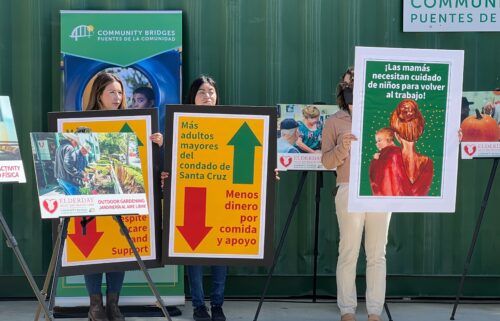Going somewhere? Here’s how to test yourself for Covid-19 before you do
By Kristen Rogers, CNN
If you need to know whether you have coronavirus but don’t want to deal with appointment scheduling and clinic wait times, a self-test can be a convenient solution. But who are self-tests right for? And how do you use them correctly?
Coronavirus self-tests — also known as home tests or over-the-counter tests — are one of several risk-reduction measures that can protect you and others by reducing the chances of spreading coronavirus, according to the US Centers for Disease Control and Prevention. These tests can be taken at home or anywhere, regardless of your vaccination status or whether you have symptoms, and are easy to use for quick results, the CDC says.
As of November 2021, self-tests detect current coronavirus infections, not antibodies to the virus, according to the CDC.
Everyone should have at least two home tests for every family member, said CNN Medical Analyst Dr. Leana Wen, an emergency physician and visiting professor of health policy and management at the George Washington University Milken Institute School of Public Health.
“If you have symptoms or were substantially exposed to someone with Covid-19, you should go get a PCR test. That’s the gold standard,” Wen said. “The at-home antigen tests should be used, ideally, when you are asymptomatic and the likelihood of you having Covid is pretty low, but you’re using it for assurance purposes.”
“Think about the at-home rapid test as a screening test … for public health purposes, not a diagnostic test,” Wen added.
Only buy tests authorized by the US Food and Drug Administration, Wen said. The agency’s website has a list of more than 40 FDA-authorized home tests, some of which have age limitations. You can buy these tests online or in pharmacies and some retail stores.
Though depending on where you are in the country, actually getting your hands on a test might be difficult right now, Wen said.
“It might require going to multiple pharmacies in order to find at-home tests,” she added.
Some local health departments or Federally Qualified Health Centers offer them for free, the CDC says. When you’re buying self-tests, make sure they’re not expired.
Consider using a self-test before joining indoor gatherings with people who don’t live with you, the CDC recommends. This suggestion is especially important if you’re planning on being around unvaccinated children, older adults, immunocompromised people or those at risk of severe disease — and, of course, if you have Covid-19 symptoms or have been exposed or possibly exposed to someone with Covid-19.
Here’s what else is important to know for before, during and after taking a self-test.
Preparing and taking self-tests
Until you’re ready to use the test, store all test items according to the manufacturer’s instructions, the CDC says. This includes not opening it until you’re ready to use it.
Before taking the test, clean the surface — such as the countertop, table, etc. — on which you’ll do the test. Have a timer ready since you might need to time some of the steps.
Carefully read all the manufacturer’s instructions, the CDC recommends. Then, wash your hands with soap and water for at least 20 seconds. When you open the box, check the test for any damage or discoloration according to the manufacturer’s description.
To collect your nasal or saliva sample — depending on the type of test you have — and complete the test, chronologically follow the included instructions.
Read the test results only within the timeframe specified in the instructions, the CDC says. If you don’t follow the instructions, your test results could be incorrect or invalid or say “error.” If this happens — due to improper use or test malfunction — check the package inserts for information or contact the manufacturer for help.
Next steps
Once you’ve taken the test, don’t reuse any of the items, the CDC says. Discard them in the trash, clean all surfaces the sample might have touched and wash your hands.
If you test positive, isolate yourself for at least 10 days, and tell your doctor and any people with whom you’ve recently had contact. Avoid indoor gatherings and, if you live with others, wear a mask.
If your result was negative and you’re asymptomatic, you might not have an infection — but that possibility isn’t ruled out. Doing “serial tests” can make self-testing more reliable and reduce your risk of spreading coronavirus if infected, according to the CDC. This means doing two or more tests over several days with at least 24 hours between tests, with one test as close as possible to the event you want to attend.
But if you have Covid-19 symptoms yet still test negative, “you should just go straight to getting a PCR test. Why get an at-home test?” Wen said. “The only situation where you would do that is if you just don’t have access to a PCR test.”
The-CNN-Wire
™ & © 2021 Cable News Network, Inc., a WarnerMedia Company. All rights reserved.



